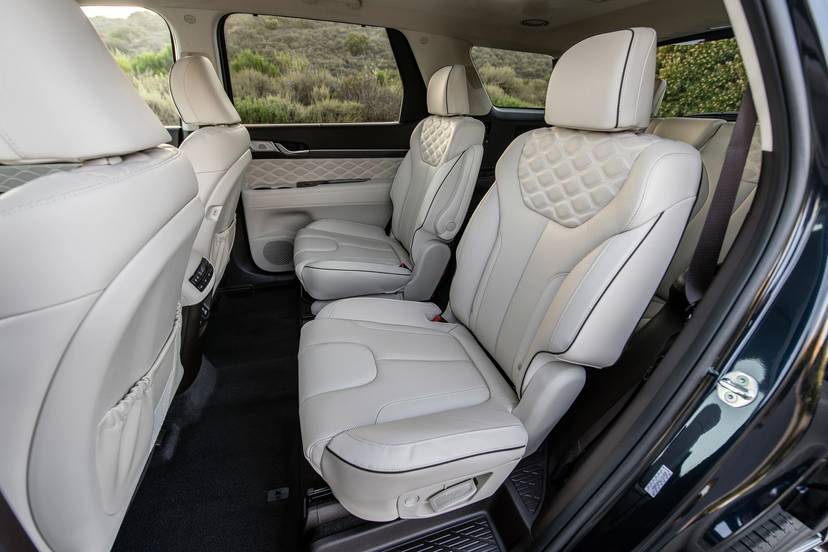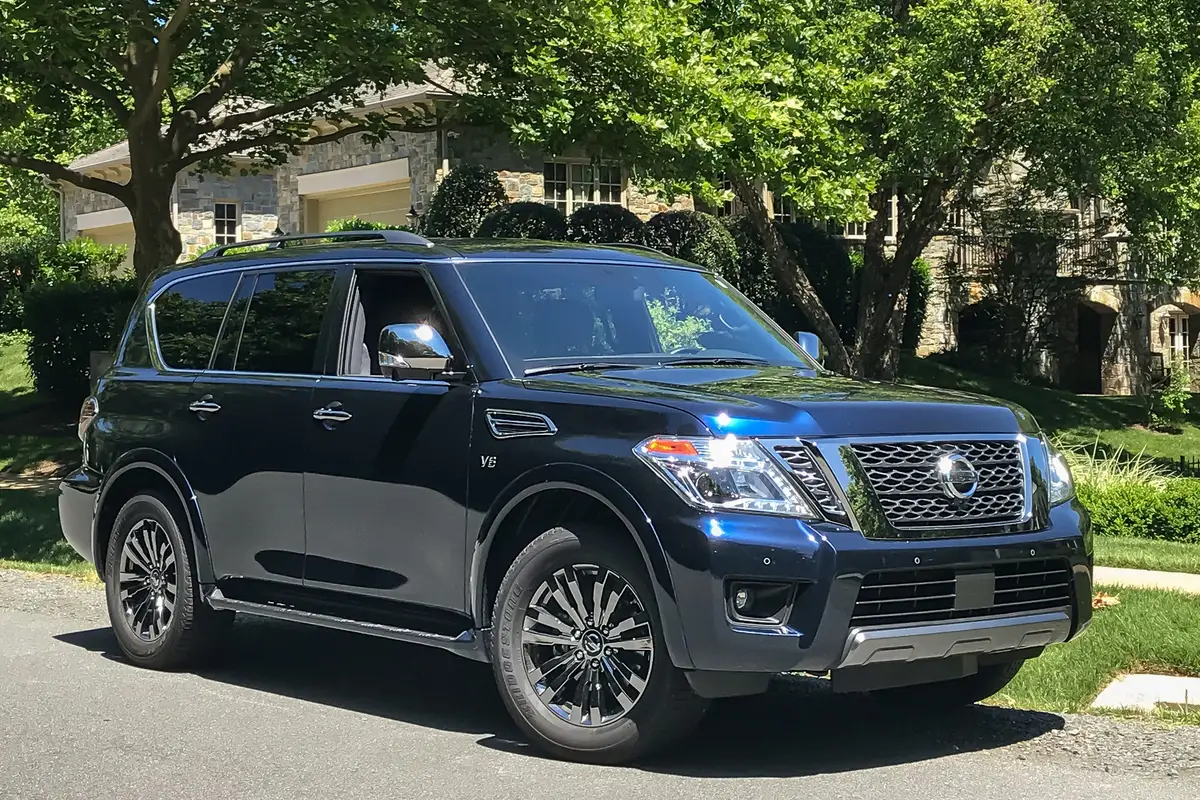
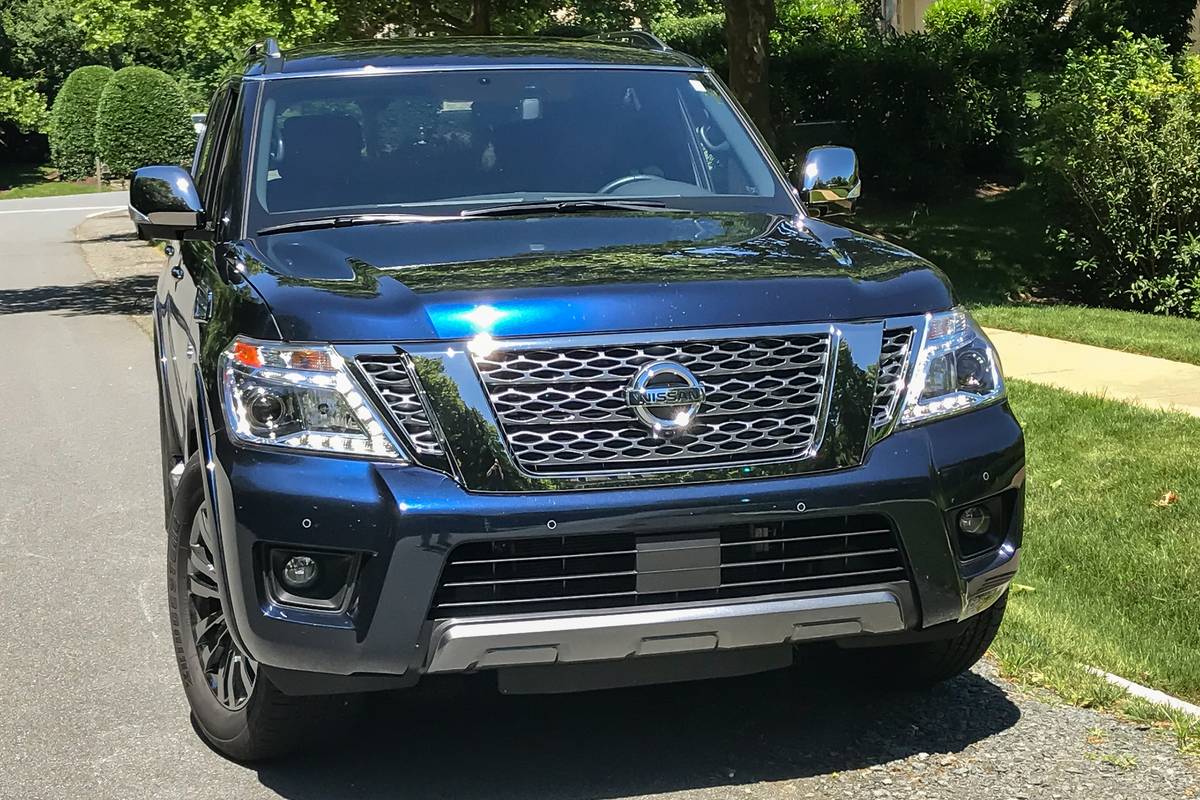


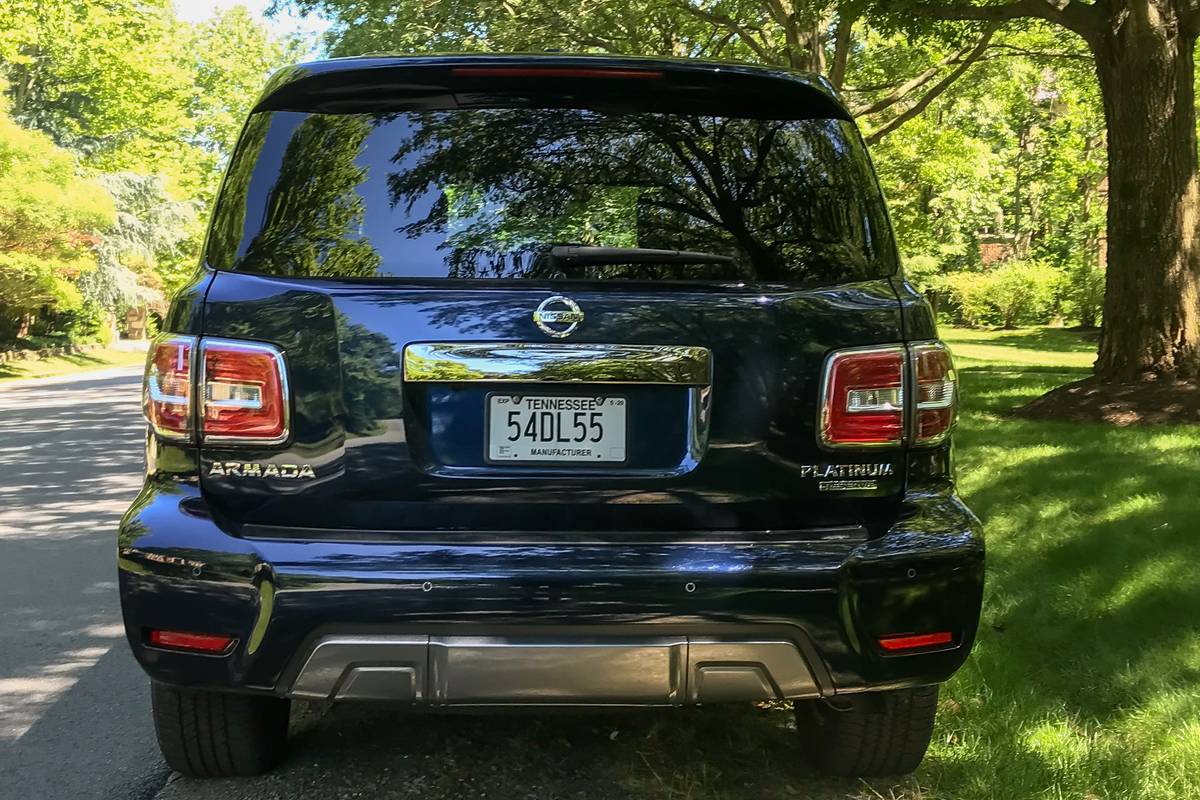
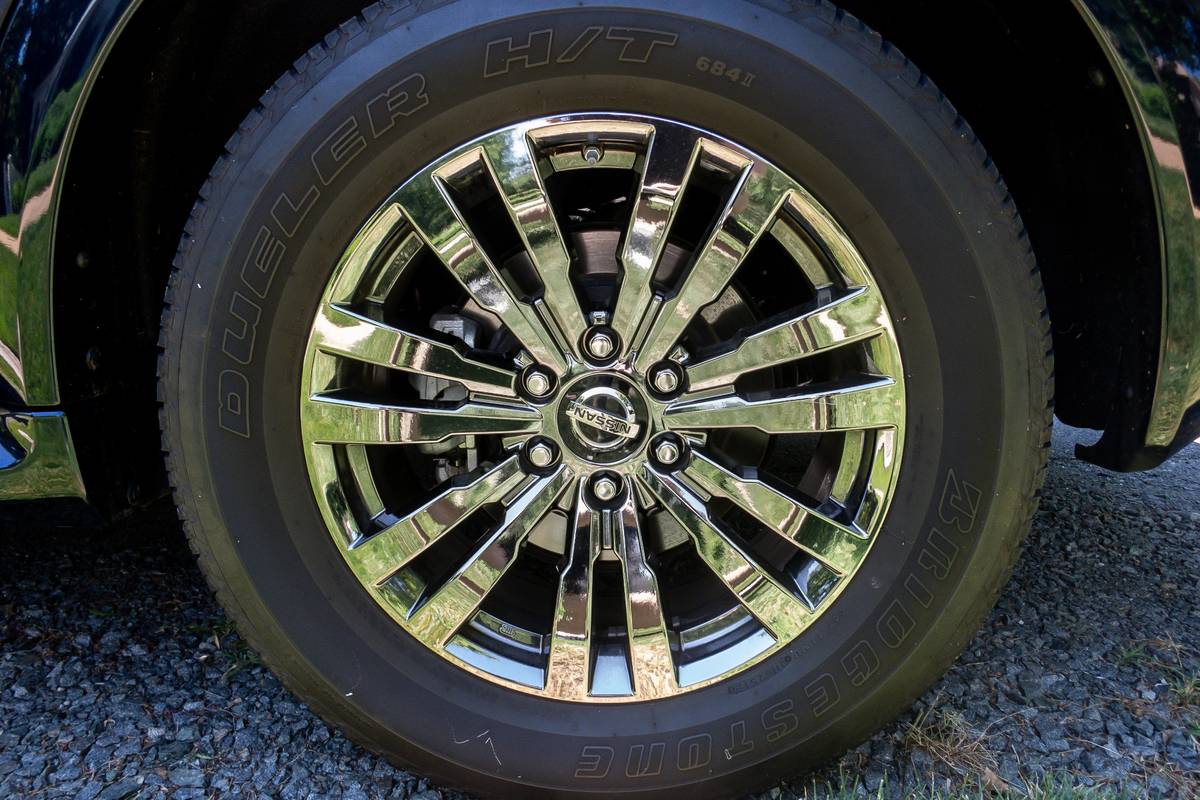
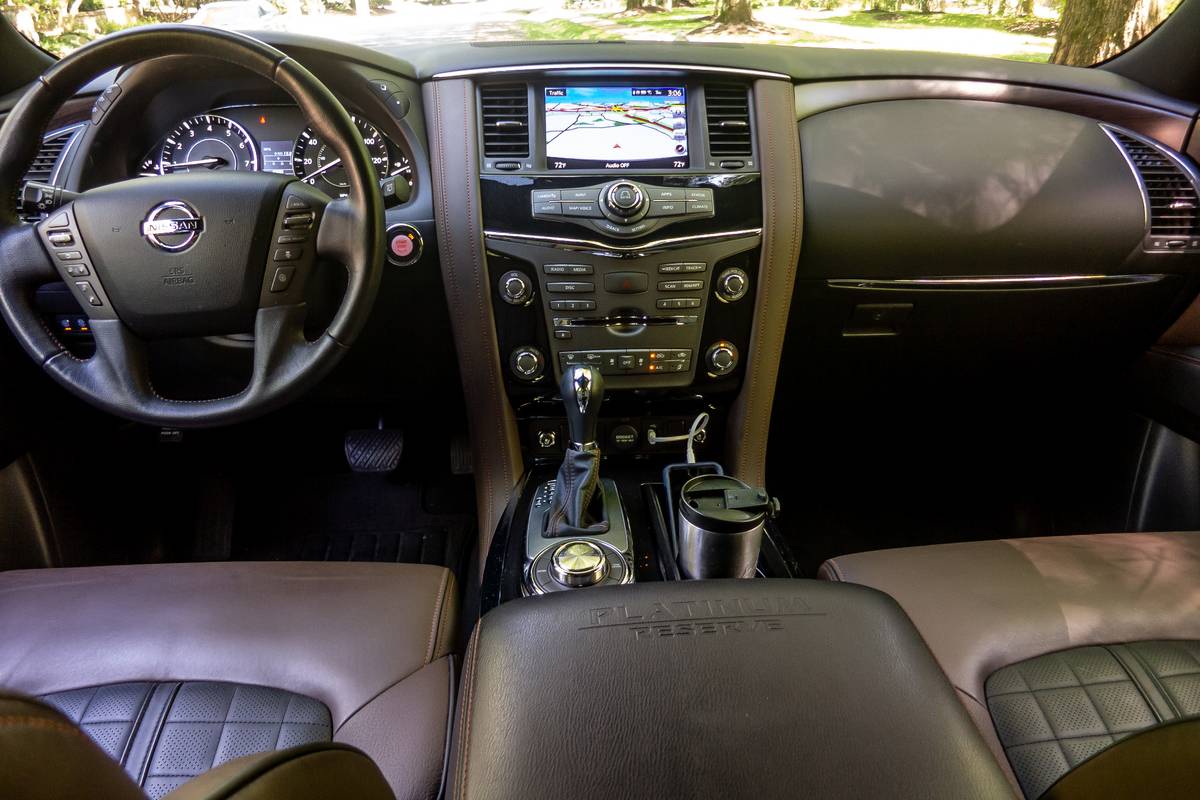

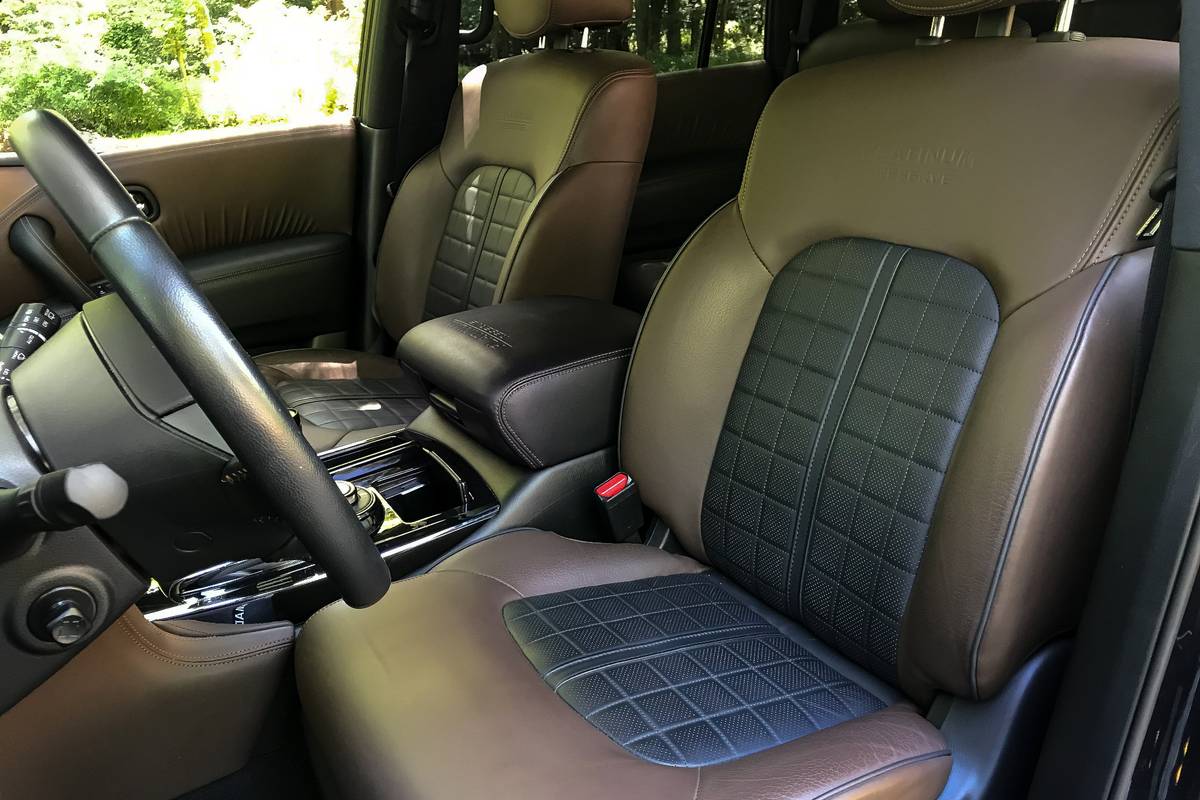


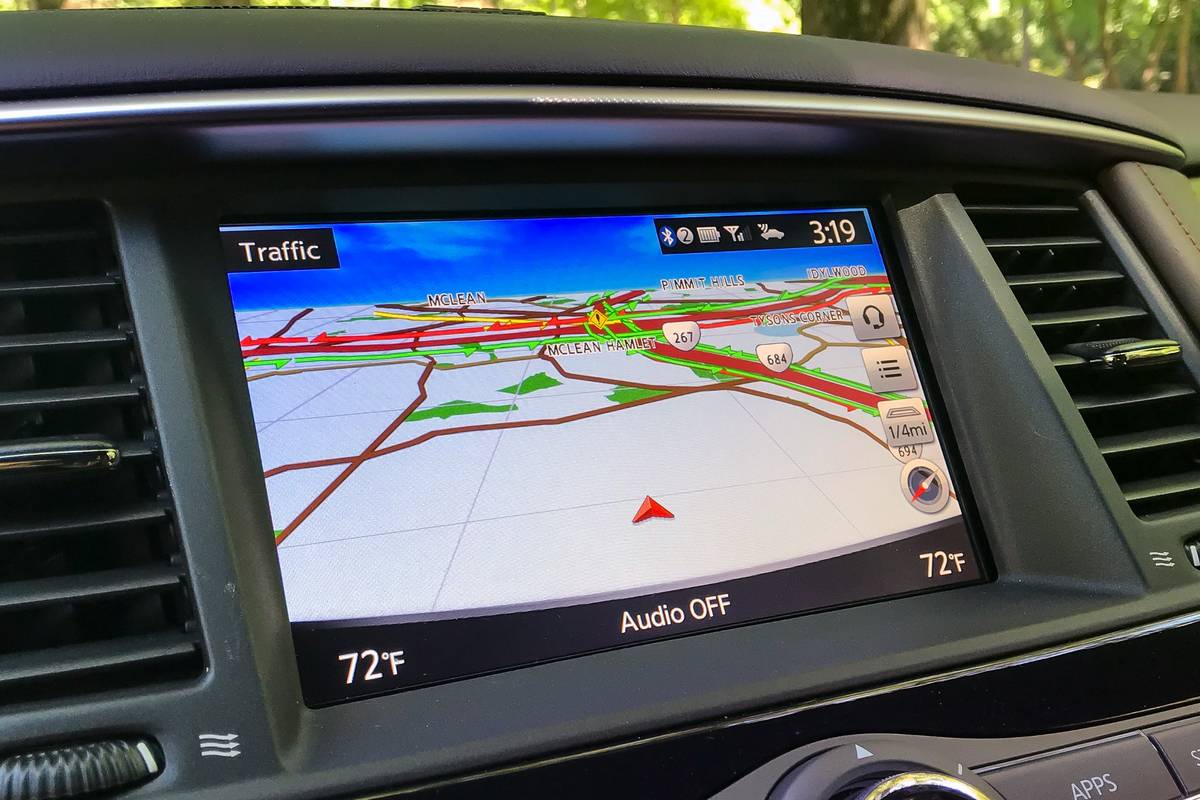
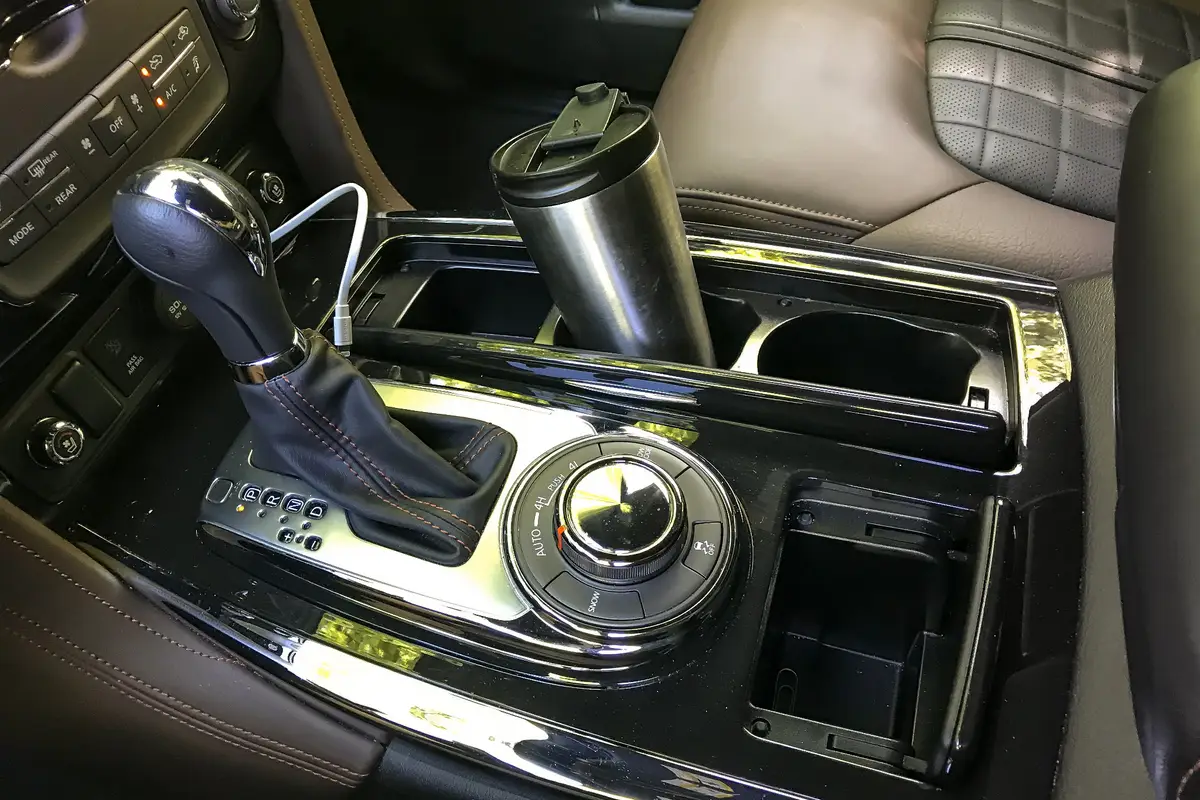
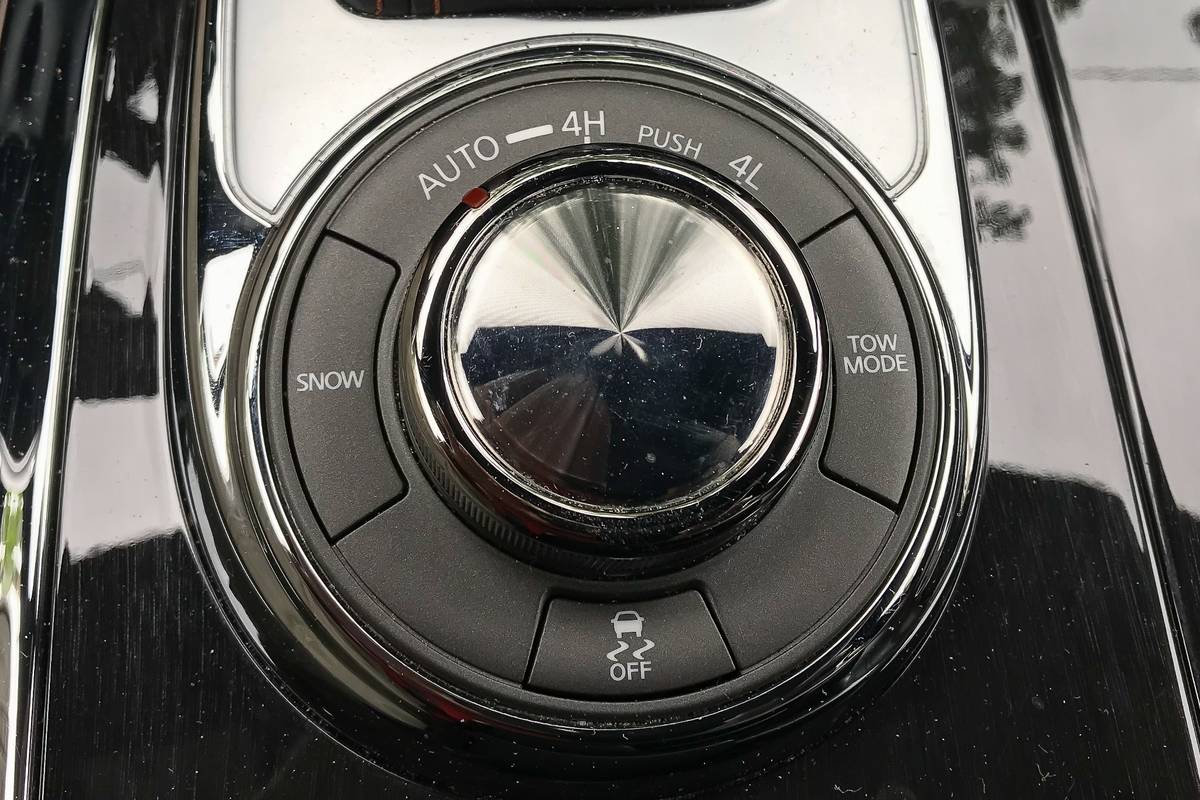
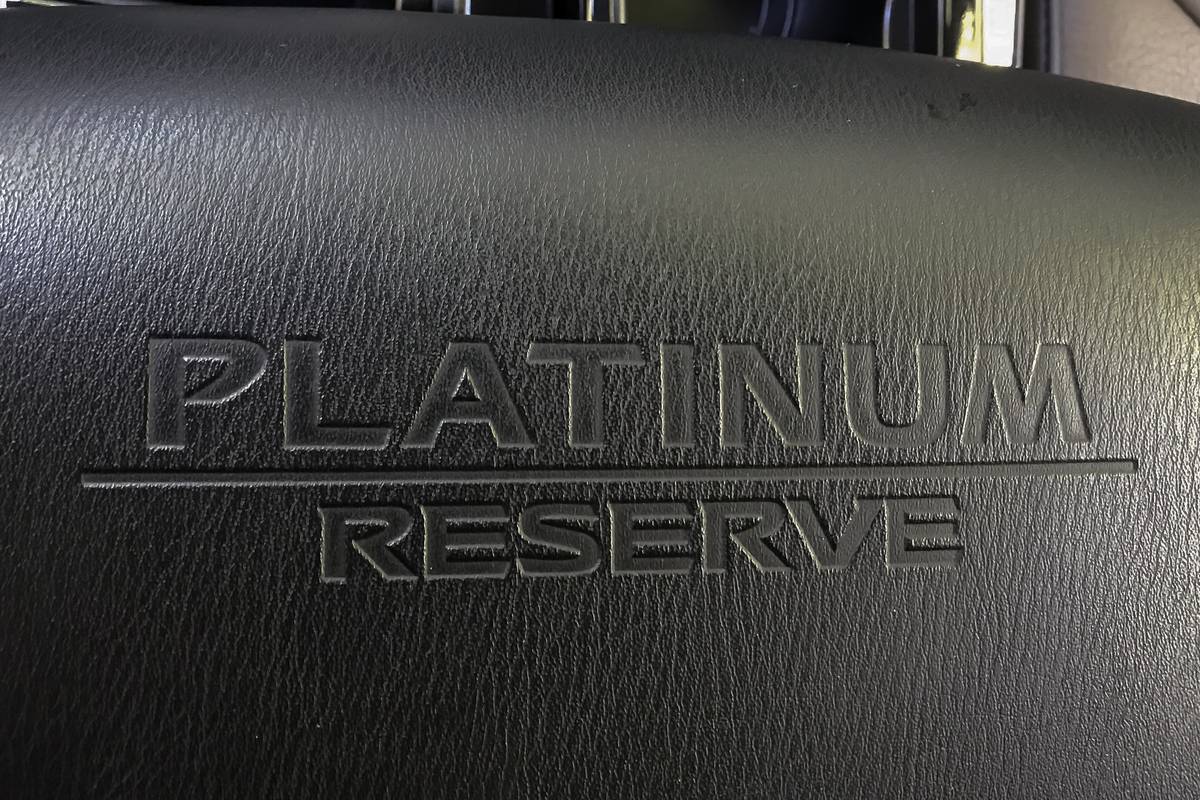
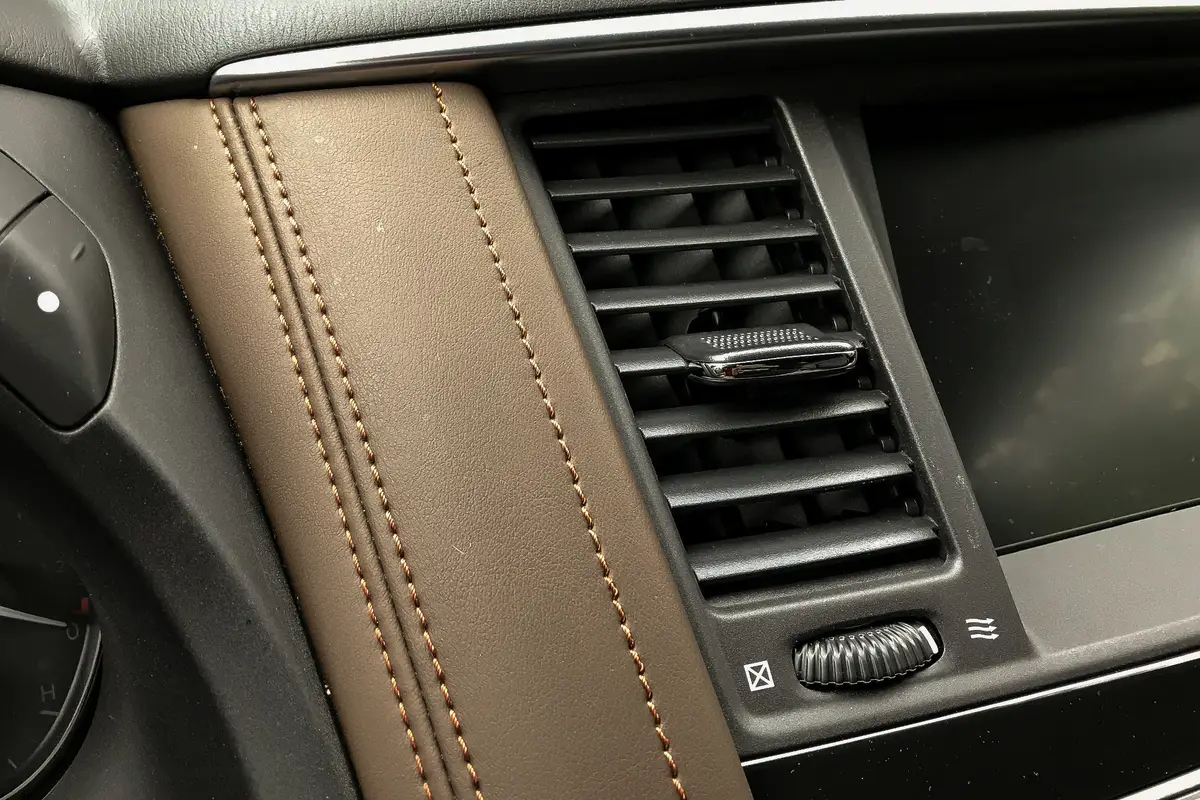
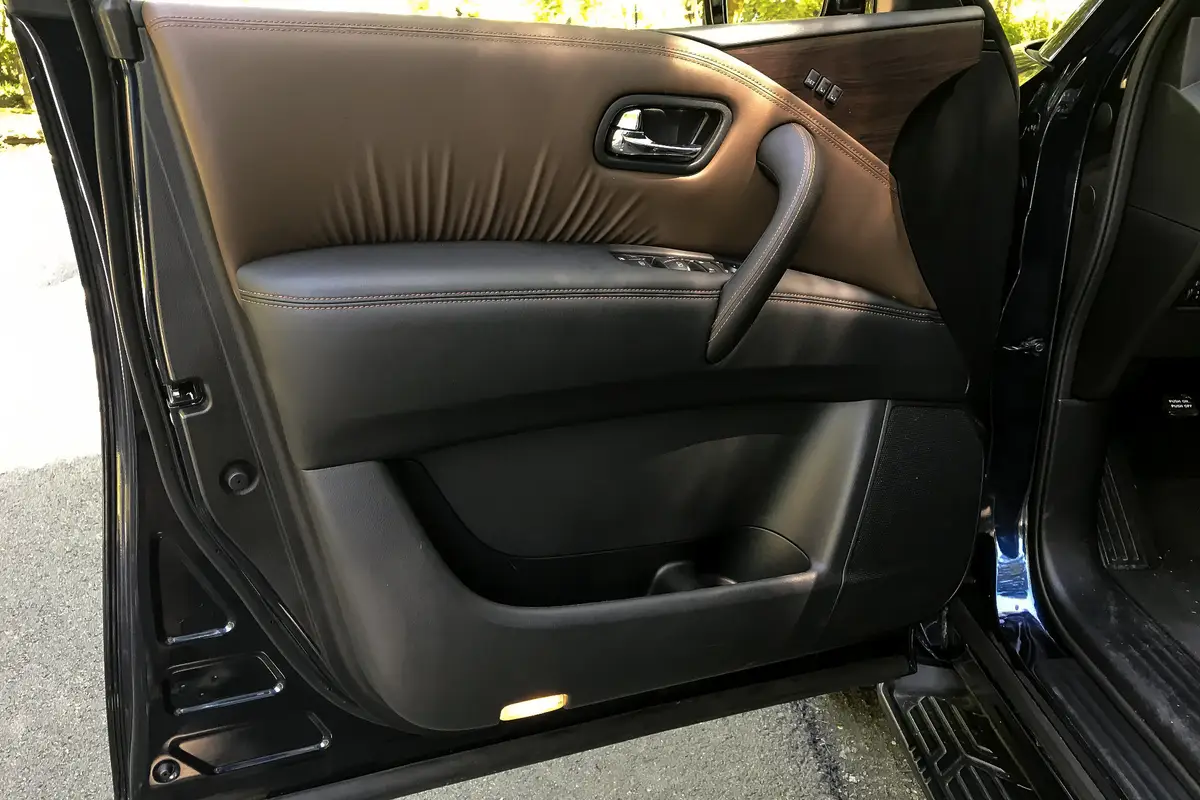
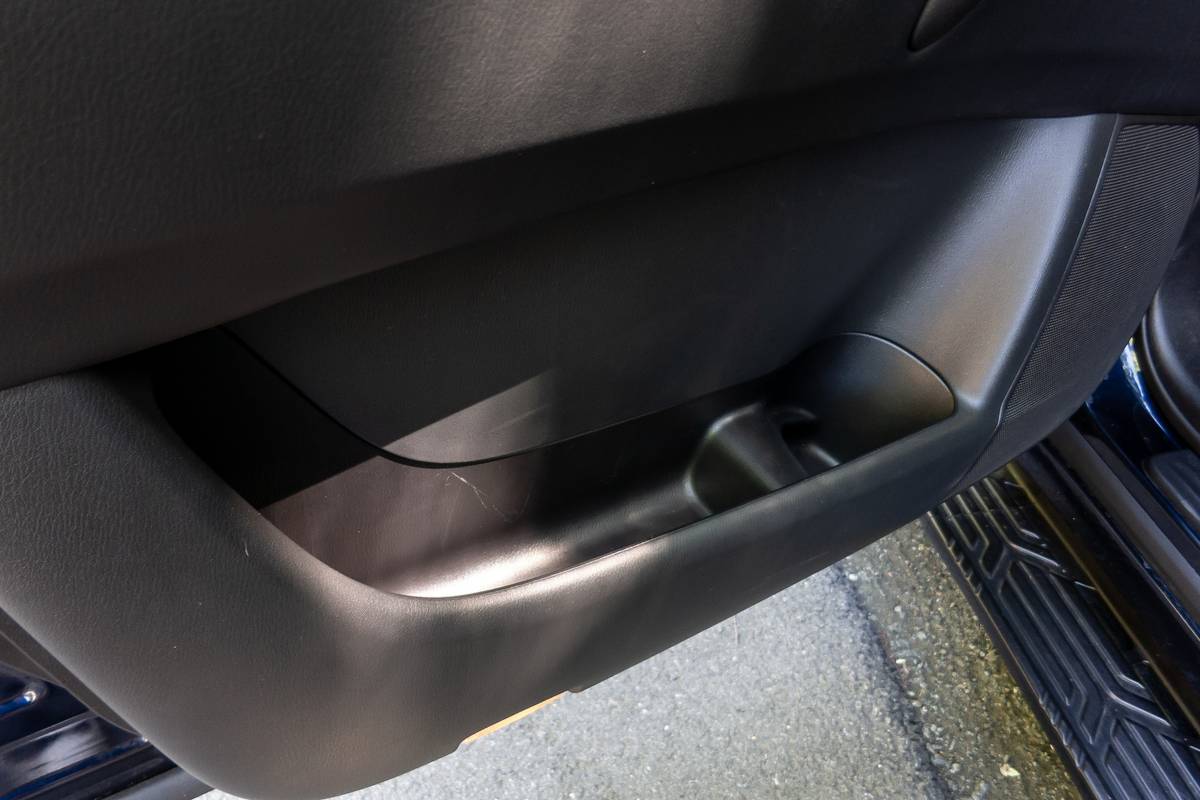
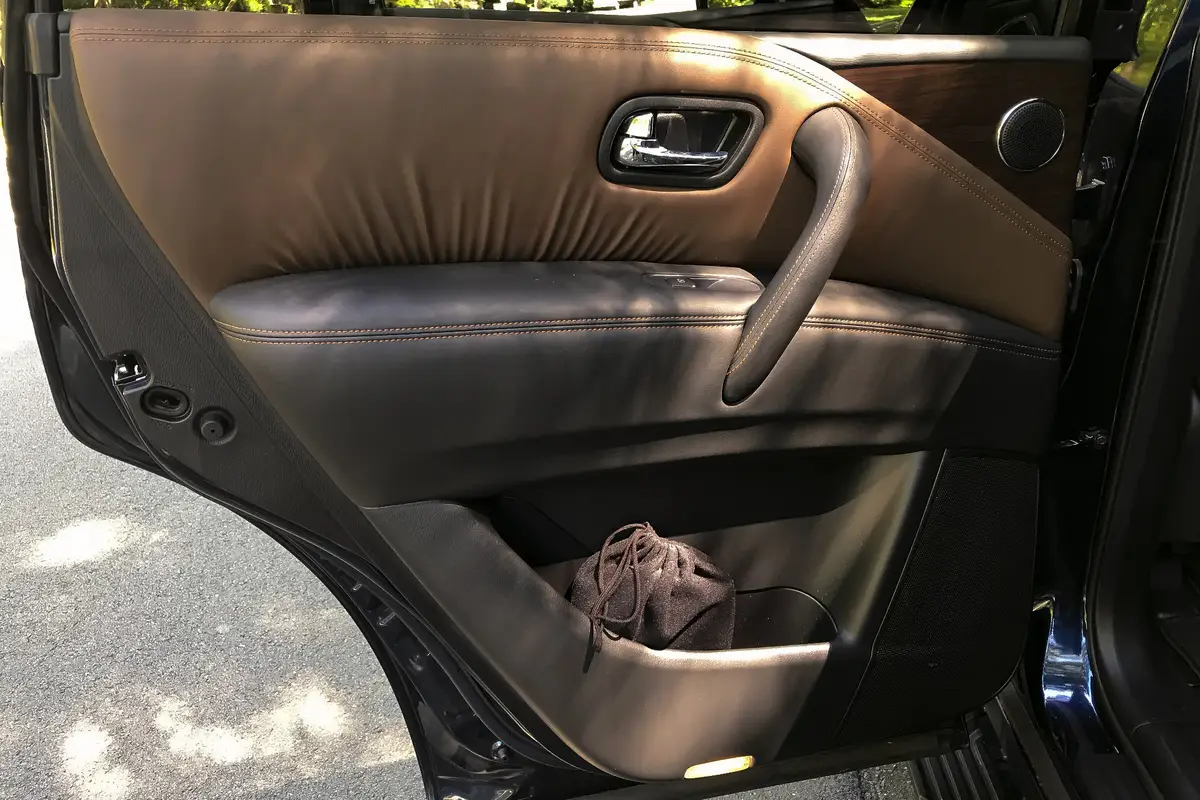


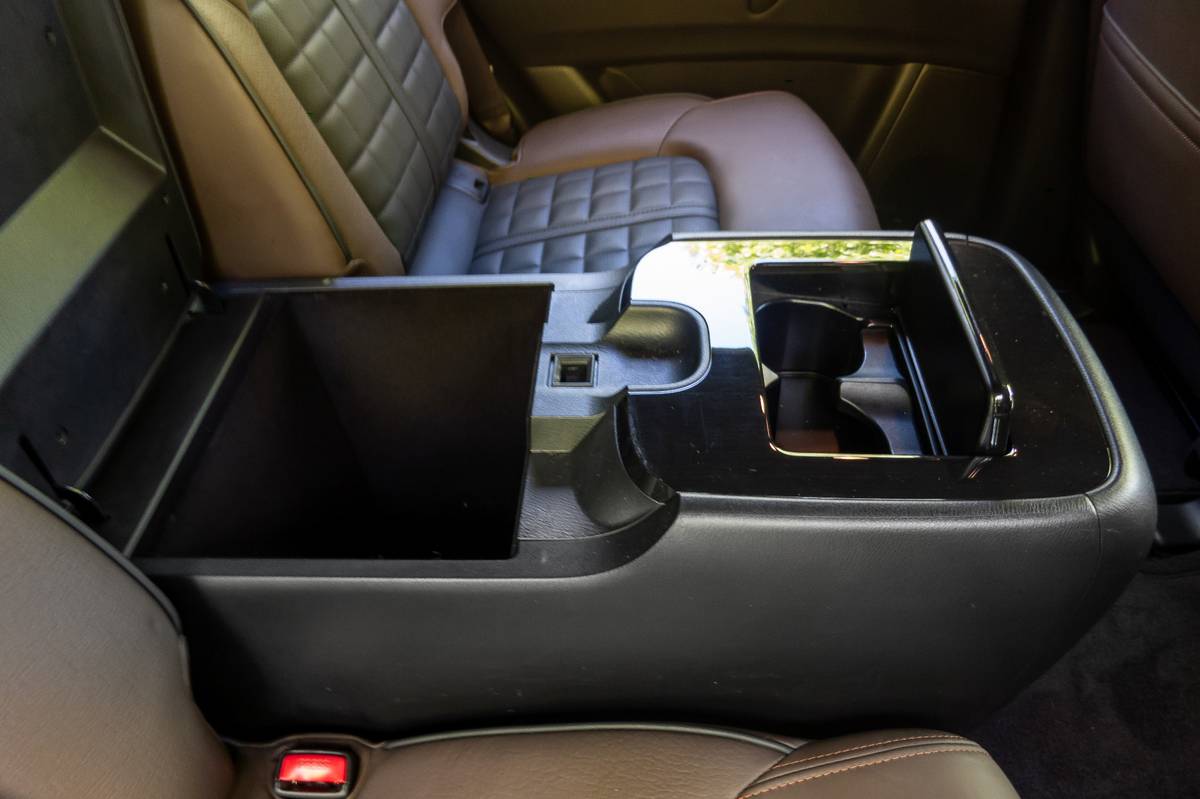
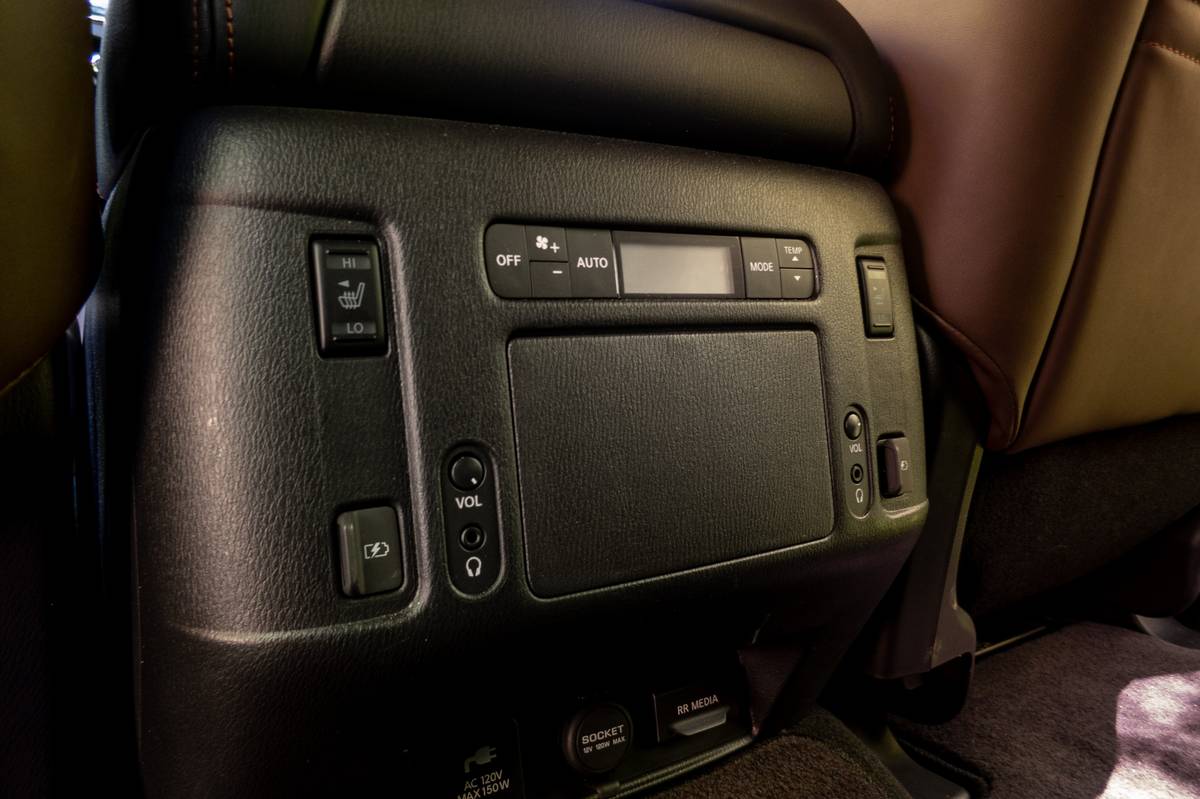

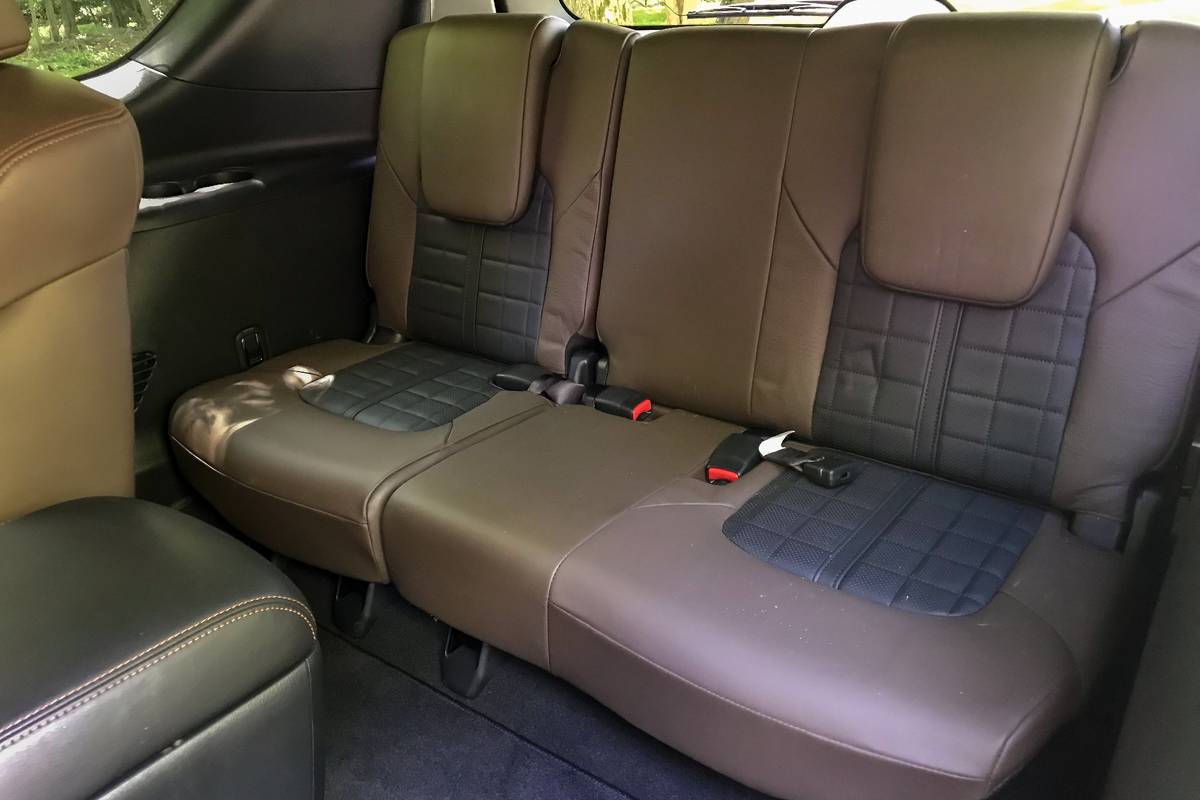

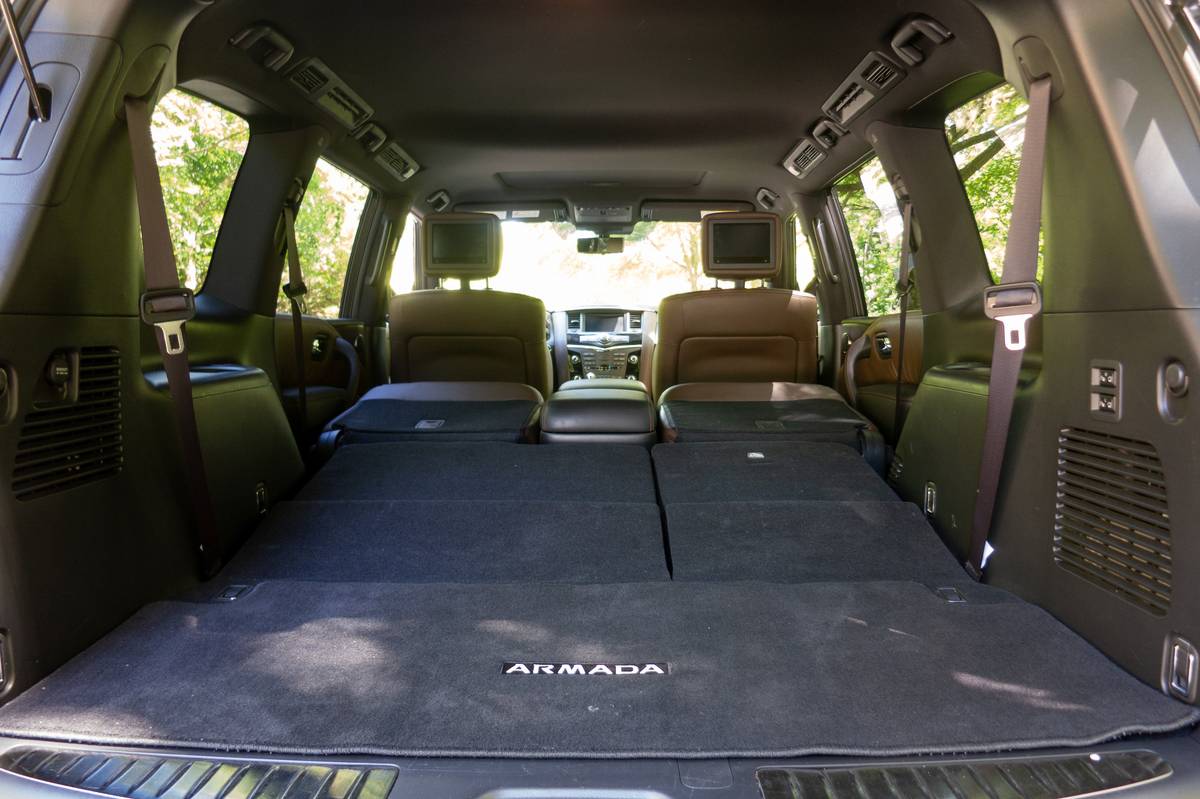
The verdict: The Armada full-size SUV is quiet, comfortable (in the first two rows), well-equipped and easy to like, but you’ll have to overlook its dated media tech, tight third row and trucklike handling.
Versus the competition: Despite shortcomings, the Armada delivers luxury, capability and an above-average tow rating at a price well below comparably equipped full-size SUVs from Chevrolet, Ford and Toyota.
Nissan’s Armada was fully redesigned for 2017 and rolls into 2019 with significant updates, including more standard safety and driver-assistance technology. Even so, it’s still much the same as the 2018 model that finished a very strong second to the more expensive Ford Expedition in our 2018 Full-Size SUV Challenge. The Armada also got a small price increase for 2019, though it still undercuts most comparable full-size, body-on-frame SUVs.
The Armada, which shares underpinnings and design with its more expensive Infiniti QX80 corporate sibling, offers a high-quality interior and ample standard features in each of its four trim levels: SV, SL, Platinum and Platinum Reserve. V-8 power and a high towing capacity are standard, and you can get rear- or four-wheel-drive on all of them. The Armada competes with mainstream-brand full-size SUVs, including the Expedition, Chevrolet Tahoe and Toyota Sequoia. Compare features and specs of all four in detail here. Like the Sequoia, the Armada is one-size-fits-all – there’s no stretch version to compete with Chevy’s Suburban or Ford’s Expedition Max.
Imposing Outside
The Armada has an imposing look, with a high and wide grille, hefty front bumper, and a high beltline above slab-like sides. I’m not much of a fan of vent trim on front fenders, but in this case it helps break up the mass. A flat roof with a large, crescent-shaped back pillar is a familiar Nissan element, shared with the QX80 and the brand’s global Patrol SUVs. Dark-painted running boards are standard and much appreciated, allowing for semi-graceful entry into the tall Armada, which has just more than 9 inches of ground clearance. All but the base trim get 20-inch alloy wheels, up from the SV’s 18s, which look a little lost on the truck.
Luxury Inside
The interior materials and design of my Platinum Reserve SUV played above its price. There’s a luxury look and feel to the interesting colors, soft-touch and padded surfaces, quality two-tone leather and vinyl coverings, and classy headliner fabric that also wraps the windshield pillars. But even the base, SV interior doesn’t look cheap, with patterned dark gray cloth seats. Materials quality holds up in the second row, though the third row is predictably more Spartan, with more plastic. Seats in the first two rows are wide, comfortable and supportive, albeit without a lot of side bolstering. The cabin is impressively quiet.
My Platinum Reserve test vehicle was a seven-seater with the optional second-row captain’s chairs ($450). If you need eight seats you can go with the standard 60/40-split folding rear seat, even on the top trim level. The seating package includes a center console between the chairs with two useful storage spaces and cupholders, but the tradeoff is it leaves no center aisle for kids to scramble through to get to the third row. The second-row buckets tip forward for third-row access, and while there’s no power tilting feature available, its lever-actuated tip was easy to use with one hand. It opens a reasonable path to a third row that’s surprisingly tight given the Armada’s size.
For starters, the back row seats three if you count the seat belts, but there’s only room for two at best. Legroom is in short supply — just under 30 inches, which is almost 25 percent less than you get in the backseat of a subcompact Nissan Versa Note — and the cushion is low, leaving knees high for adults or teens. The second-row seats don’t slide to allow legroom sharing, and even with the captain’s chairs the console means there’s no space to stretch out legs between the chairs. Headroom is adequate even for a tall adult, however, and a power recline helps comfort. There are four third-row cupholders, but no accessory power (there’s a 12-volt outlet in the cargo area). Still, the Armada’s third row is more accommodating than the Chevy Tahoe’s, even if it’s shamed by the new Ford Expedition’s. That said, if third-row space is your top priority, you might want to skip all these truck-based SUVs in favor of a more space-efficient car-based three-row crossover.
Cabin storage is adequate, with a small bin under the center console armrest, rear console storage and three center console cubbies (two covered) for devices and other items. Unfortunately, those cubbies have hard plastic bottoms that allow small items to rattle when driving on rougher pavement. The front cupholders are sized for cups that match the big SUV, with no grips for smaller diameters. My Starbucks metal go cup rode loosely and often at an angle in the cupholder’s big opening.
Interior Tech Mixes Latest and Dated
Higher trim levels include an expected range of mostly standard luxury features, from seat, steering and mirror memory to a heated steering wheel. Even the base SV includes 13-speaker Bose audio and in-car navigation. Platinum and Platinum Reserve models include a rear entertainment system with dual 8-inch seatback screens, wireless headphones, a DVD player with an HDMI input, and a 120-volt household outlet.
Overall, though, the Armada’s technology is an inconsistent mix of the latest and the dated. That starts with the dashboard’s busy array of old-school buttons and switches. I welcomed the direct access to often-used controls and found them logically arranged, but there are newer designs that similarly manage to avoid touchscreen dependence, but with far less visual clutter and controls with a more upscale feel.
For 2019, higher-trim Armadas get a new video rearview mirror with a big viewing area, as well as a bigger conventional backup mirror when not using the video than many of these new systems. Also helping drivers negotiate the Armada’s 41.3-foot turning diameter is a 360-degree camera system that’s standard on all but the SV.
Sharing the stage with these modern conveniences is an ancient 1990s-style monochrome driver information screen between the gauges and a smallish, rectangular 8-inch touchscreen system in the dashboard that needs more speed, higher resolution and much more up-to-date graphics. The screen position is also a stretch for the driver; it has a knob controller with shortcut buttons that’s closer but still high on the dash, positioned just below the screen itself rather than at hand on the center console. A more sophisticated big-screen system that’s closer to you and has only needed knobs and shortcuts would significantly raise the luxury quotient.
Meanwhile, another juxtaposition of new and old-school is multiple USB ports front and rear, as well as optional wireless phone charging and a newly available Wi-Fi hot spot — but no Apple CarPlay or Android Auto integration, even though Nissan includes them in many models.
Holds a Little, Tows a Lot
As with the small third row, cargo space is less than you might expect given the Armada’s size. Space behind the third row is 16.5 cubic feet — comparable to a Tahoe but less than an Expedition or Sequoia — and the height is substantial. The split, folding third-row seatback — powered on all but the SV — folds down to open up 49.9 cubic feet of cargo space behind the second row. There’s a total of 95.4 cubic feet with all the seatbacks folded. Both those specs are comparable to the Chevy but trail the Ford and Toyota.
The Armada beats them all when it comes to the weight it can tow, with a rating of up to 8,500 pounds. A standard self-leveling rear suspension is a plus for big loads, whether onboard or pulled behind, and the Armada’s big side mirrors and 360-degree camera system aid towing. But some issues arose during Cars.com’s 2018 full-size-SUV towing tests, and the 2019 is virtually the same in regard to towing. You can get full details on our towing evaluation versus the Armada’s closest rivals here.
How It Drives
The standard 5.6-liter V-8 puts out 390 horsepower and 394 pounds-feet of torque — plus a satisfying low-frequency growl when prodded. It’s paired with a seven-speed automatic that shifts smoothly and positively. While the big Armada feels a little heavy off the line, it comes on strong with willing downshifts and plenty of power for on-ramps, merging and passing. The powerful V-8 is thirsty, however, with an EPA rating of 14/19/16 mpg city/highway/combined with rear-wheel drive, 1 mpg less in each category with all-wheel drive. No full-size SUV is a fuel-sipper, but the Armada’s ratings are on the low end, along with the Toyota Sequoia.
The Armada has a very comfortable ride, easily soaking up bumps on broken or uneven pavement. Even so, it exhibits plenty of body motion, and there’s substantial body lean when pushed. Its handling feels noticeably less planted than a similar QX80 I drove. That SUV had Infiniti’s Hydraulic Body Motion Control system, which isn’t available on the Armada. The Armada’s speed-sensitive steering is lighter and more in need of corrections than I would like, but its brakes have a good, linear feel and kept all that mass in a straight line on hard stops.
Rear-wheel drive is standard, and a capable four-wheel-drive system is available. In addition to automatic electronic all-wheel drive, it offers locking four-wheel-drive high and low when you want them for the appropriate conditions or terrain (very low traction or climbing). Drive modes also include Snow and Tow settings.
Safety and Driver Assistance
The standard safety portfolio has expanded for 2019 to include adaptive cruise control and a front collision system with automatic emergency braking. Both were previously standard only on top trim levels, optional on the SL and not available on the SV. That’s still the case for 2019 for lane departure warning, lane keep assist, and blind spot warning with rear cross-traffic alert.
A new standard safety feature for 2019 is Rear Door Alert, which is meant to help you not forget the laptop (or toddler) you put in the backseat. It warns the driver if a rear door was used at the start of a trip but not accessed again when it ended, including a horn beep if you walk away.
Families with smaller children should note that the Armada got mixed scores in Cars.com’s most recent Car Seat Check. The third row in particular was downgraded for access and child-safety seat issues in our full Car Seat Check here.
The 2019 Armada is rated four stars out of five overall in NHTSA crash testing — equal to the Tahoe’s overall score but short of the Expedition, which was awarded five stars.
Value Is a Core Appeal
Armada pricing is up slightly for 2019, starting at $48,495 for a well-equipped base SV (including a $1,395 destination charge). Add $3,000 for all-wheel drive. It tops out with a loaded all-wheel-drive Platinum Reserve that starts at $64,725. Not cheap, but it undercuts its closest rivals at every trim level with more features and luxury for a lower price — and the widest margin comes at the top.
I found the 2019 Armada to be a comfortable and all-around capable SUV for the price that’s easy to live with in daily driving — as long as you can overlook some rough edges and detail lapses. It’s good at a lot of things, fails at a few and really excels at one: value.
Cars.com’s Editorial department is your source for automotive news and reviews. In line with Cars.com’s long-standing ethics policy, editors and reviewers don’t accept gifts or free trips from automakers. The Editorial department is independent of Cars.com’s advertising, sales and sponsored content departments.










































